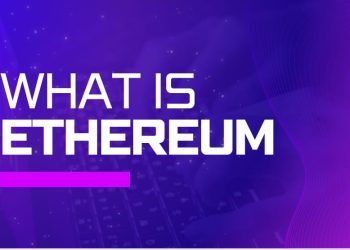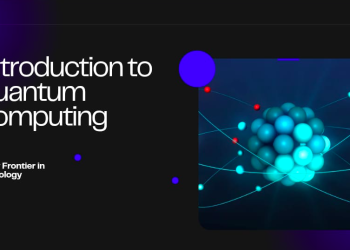Data Compression: What Is It?
Introduction to Data Compression
Discover how data compression powers everything from streaming to cloud storage! Learn key algorithms, real-world uses, and how to optimize file sizes like a pro.
Data compression is a fundamental concept in computer science and information technology that involves reducing the size of data files to save storage space, speed up data transmission, and improve efficiency. It is widely used in various applications, including file storage, multimedia streaming, communication systems, and database management.
The primary goal of data compression is to represent data in a more compact form by eliminating redundancy or using efficient encoding techniques. There are two main types of data compression: lossless compression and lossy compression, each serving different purposes based on the requirements of the application.
Why Is Data Compression Important?
Data compression plays a crucial role in modern computing and digital communication for several reasons:
- Storage Efficiency: Compressed files take up less disk space, allowing more data to be stored on hard drives, SSDs, and cloud storage.
- Faster Data Transfer: Smaller files can be transmitted more quickly over networks, reducing bandwidth usage.
- Improved Performance: Compressed data requires less processing power for reading and writing, enhancing system performance.
- Cost Savings: Reduced storage and bandwidth requirements lead to lower operational costs for businesses and individuals.
- Enhanced Multimedia Streaming: Video and audio files are often compressed to enable smooth streaming over the internet.
How Does Data Compression Work?
- Redundancy Removal: Identifies and removes repeated data patterns.
- Encoding Optimization: Uses algorithms to represent data in fewer bits.
- Approximation (Lossy): Discards less important data to achieve higher compression.
Example:
- A text file containing “AAAAABBBBB” can be compressed as “5A5B” using Run-Length Encoding (RLE).
- A high-resolution JPEG image reduces file size by removing imperceptible details.
Types of Data Compression
1. Lossless Compression
Lossless data compression ensures that without lost any original data the should be compressed . No information is lost, making it ideal for text files, databases, and executable programs where data integrity is critical.
Examples of Lossless Compression:
- ZIP & RAR: Common file compression formats used for documents, images, and software.
- PNG (Portable Network Graphics): A lossless image format that retains all original pixel data.
- FLAC (Free Lossless Audio Codec): Used for high-quality audio compression without losing fidelity.
- GZIP: A popular compression method for web servers to reduce file sizes before transmission.
How Lossless Compression Works:
- Run-Length Encoding (RLE): Repeats sequences of the same data (e.g., “AAAAA” becomes “5A”).
- Huffman Coding: Uses variable-length codes for frequent characters (shorter codes for common symbols).
- Lempel-Ziv-Welch (LZW): Builds a dictionary of repeated sequences to replace them with shorter codes.
2. Lossy Compression
Lossy compression reduces file size by permanently eliminating redundant or less important data. This method is commonly used for multimedia files where minor quality loss is acceptable.
Examples of Lossy Compression:
- JPEG (Joint Photographic Experts Group): A widely used image format that sacrifices some quality for smaller file sizes.
- MP3 (MPEG Audio Layer III): Compresses audio by removing frequencies that are less audible to humans.
- MPEG (Moving Picture Experts Group): Used for video compression in formats like MP4, AVI, and streaming services (YouTube, Netflix).
- WebP: A modern image format that provides better compression than JPEG but may lose some details.
How Lossy Compression Works:
- Discrete Cosine Transform (DCT): Used in JPEG to convert image blocks into frequency components, discarding high-frequency data.
- Perceptual Coding (MP3): Removes sounds that are less noticeable to the human ear.
- Downsampling: Reduces resolution or color depth to shrink file size.
Common Data Compression Algorithms
Several algorithms are used to achieve efficient compression:
- DEFLATE (Used in ZIP & GZIP): Combines LZ77 and Huffman coding.
- LZMA (Used in 7-Zip): Provides high compression ratios for large files.
- Brotli (Used by Google for web compression): Optimized for text and web content.
- H.264/H.265 (Video Codecs): Used for efficient video compression in streaming and broadcasting.
Applications of Data Compression
1. File Storage & Archiving
- Cloud Storage (Google Drive, Dropbox): Compresses files to save space.
- Backup Solutions: Reduces backup size for faster transfers.
2. Internet & Web Browsing
- HTTP Compression (GZIP, Brotli): Speeds up webpage loading.
- Streaming Services (YouTube, Spotify): Uses lossy compression to deliver content efficiently.
3. Multimedia & Entertainment
- Digital Cameras (JPEG, RAW): Compresses photos to fit more images on memory cards.
- Video Conferencing (Zoom, Teams): Reduces bandwidth usage for smoother calls.
4. Database Management
- SQL Databases: Compresses large datasets to improve query performance.
Advantages & Disadvantages of Data Compression
Advantages:
✅ Saves storage space
✅ Reduces bandwidth usage
✅ Speeds up file transfers
✅ Improves system performance
Disadvantages:
❌ Lossy compression reduces quality
❌ Compression/Decompression requires processing power
❌ Some formats are proprietary (e.g., RAR requires special software)
Future of Data Compression
With increasing data generation, compression techniques continue to evolve:
- AI-Based Compression: Machine learning models optimize compression by predicting redundant data.
- Quantum Compression: Future quantum computing may enable ultra-efficient compression.
- Improved Codecs (AV1, WebP 2): Newer formats offer better compression with minimal quality loss.
5. Conclusion
Data compression is essential in modern computing, enabling efficient storage, faster transfers, and cost savings. While lossless compression ensures perfect reconstruction (ideal for text and databases), lossy compression sacrifices some quality for higher efficiency (best for multimedia).
Key Takeaways:
✔ Storage & Bandwidth Savings – Critical for cloud and streaming services.
✔ Security Enhancement – Works alongside encryption for better protection.
✔ Trade-offs Exist – Lossy compression reduces quality, while lossless retains it.
As technology evolves, AI-driven compression and quantum computing may revolutionize data optimization further. Understanding compression helps users and businesses choose the best method for their needs.
Final Thought:
“Data compression is like packing a suitcase—smart organization lets you carry more without losing what’s important!”










